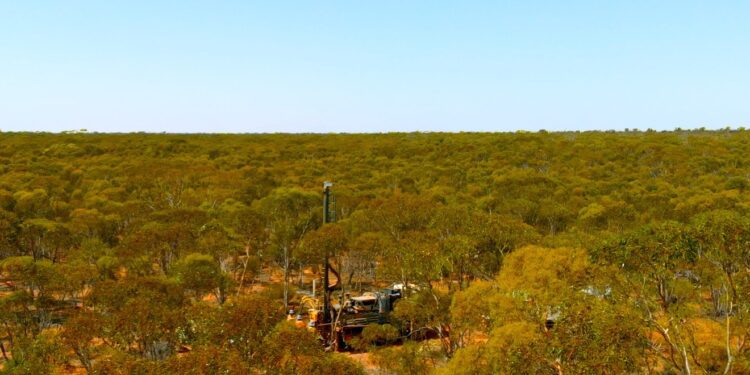Drilling Expands Strike Length Of Fraser Range Target
Galileo Mining Ltd’s (ASX: GAL) third RC drill hole at the Delta Blues DB2 target has intercepted more sulphides expanding the mineralised strike length to a minimum of 210m at the company’s Delta Blues prospect within the Fraser Range Belt in Western Australia.
Managing Director, Brad Underwood, said initial RC drill testing has been completed at DB1 target with drill hole DBRC004 touching only the very top of the EM model which was calculated to start between 175m and 255m below surface.
“It is very uncommon to come across sulphide mineralisation of the scale we see at the DB2 target. While the economic potential of the mineralisation will need to be further assessed, the results to date are highly encouraging for the prospectivity of our drill targets in the area,” Mr Underwood said.
“Initial RC drill testing of the DB1 target has been completed and was designed to intercept the very top of the EM model calculated to be between 175 and 255 metres below surface. The source of the conductive anomaly has yet to be explained and nickel prospective intrusive rocks were noted in the geology logs. Most importantly no sulphidic or graphitic sediments were recorded and the target remains strongly compelling due to its high modelled conductivity and geological setting.
Our immediate focus for Delta Blues now moves to the assay results and the results of additional geophysical surveying which will help define the deeper targets for diamond drill testing. We look forward to updating the market as these results become available.”
The first deep RC drilling campaign at the Delta Blues prospect is now complete with three drill holes at the DB2 target intercepting semi-massive sulphides over a minimum strike length of 210m.
The scale of the mineralised system at DB2 is substantial with modelled conductor dimensions up to 500m by 500m (Table 1). Only the very top of the conductor at DB2 has been drilled and deeper diamond drilling is required to determine economic potential of the prospect.
One drill hole (DBRC004) was completed at the DB1 target, with a second drill hole to the south (DBRC005) abandoned after drill rods became bogged due to running sands collapsing into the drill hole. Geological logging of DBRC004 records multiple units of intrusive rocks of the kind associated with known nickel-copper occurrences in the Fraser Range belt.
The cause of the conductive anomaly at DB1 was not identified and deeper diamond drilling is required to determine the source. It is important however to recognise that no graphite or sulphidic sediments were logged in the drill hole and that the strongly conductive source remains unexplained.
Samples from the RC drilling have been submitted for analysis to the laboratory in Kalgoorlie with results expected in September. Timing of diamond drilling is subject to rig availability as Western Australia continues to be affected by labour shortages which limit the ability of contractors to undertake Galileo’s drill programmes. For further information please visit: http://www.galileomining.com.au/












